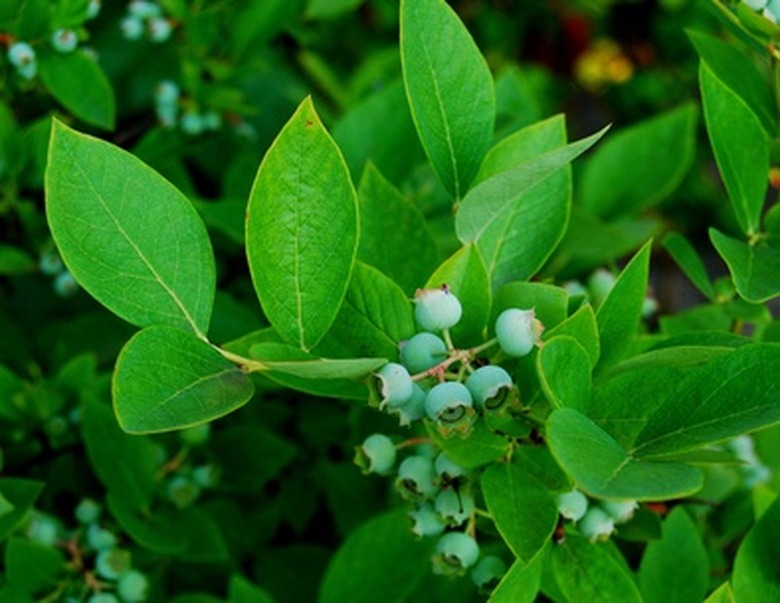How To Grow Blueberries In Clay Soil
Things Needed
- Soil sample
- Soil pH lab test results
- Elemental sulfur
- Sawdust
Blueberries tend to grow in the wild where the soil is mostly rotting plant material, very porous and well-drained. Clay soils are just about the opposite of this description, but that does not mean you cannot grow blueberries. It means that you will have to amend your soil to grow blueberries successfully. Blueberries need an acidic soil with a pH of 4.5 to 5.5, so if you have to raise the acidity by more than a point, it will take a couple of years to make the changes. By then, your blueberries may die. Instead, consider planting them on raised beds or containers.
Step 1
Use the results of a soil lab analysis to determine the acidity for growing blueberries. If you have an alkaline soil that is also high in clay content, it will be easier to replace the soil with the proper mix than to fix the acidity and clay content.
- Blueberries tend to grow in the wild where the soil is mostly rotting plant material, very porous and well-drained.
- Blueberries need an acidic soil with a pH of 4.5 to 5.5, so if you have to raise the acidity by more than a point, it will take a couple of years to make the changes.
Step 2
Adjust the pH of your soil by adding the appropriate amount of elemental sulfur to the area. You cannot speed up the process by adding more, but you can treat the root zone of the blueberry plants if you do not want to transplant them to a raised bed or container. Drill four to eight holes around the drip line of the plant. They should be 12 inches deep and 6 inches wide. The Oregon State University Extension Office recommends adding ¼ cup of elemental sulfur to the soil from each hole, along with 2 tbsp. of iron. Replace the soil and water with at least 1 inch of water.
- Adjust the pH of your soil by adding the appropriate amount of elemental sulfur to the area.
- Replace the soil and water with at least 1 inch of water.
Step 3
Mulch the blueberries with at least 6 inches of fresh sawdust every year. This will decompose and slowly acidify the soil, but check the pH every year to determine if you need more elemental sulfur. At the same time you are acidifying the soil with the sawdust, you will be increasing the organic matter and the drainage of the site as well.
Tip
A good mix for container-grown blueberries is a ration (8:1:1) of fir bark, peat moss and perlite.
